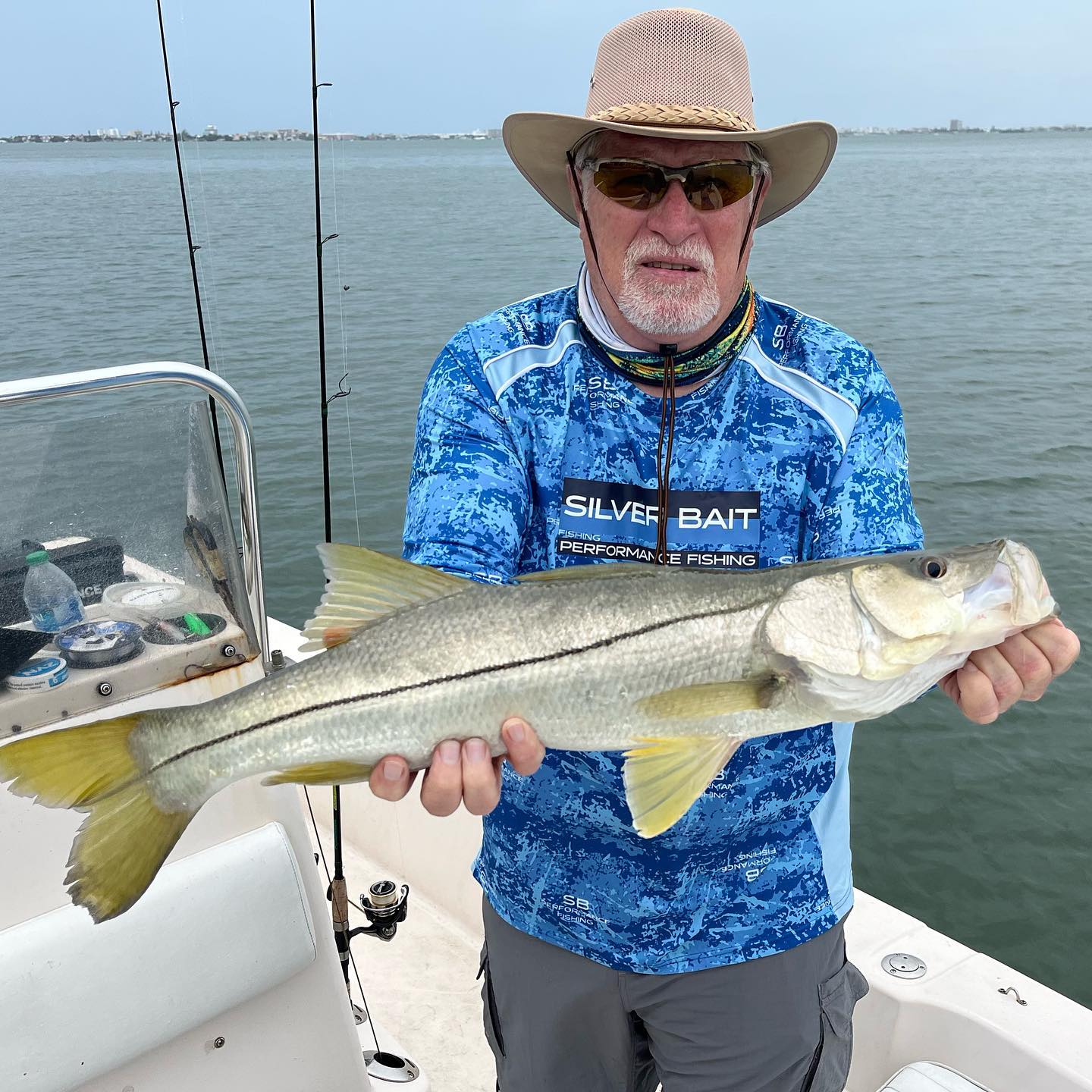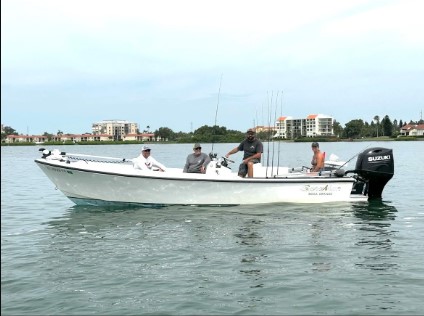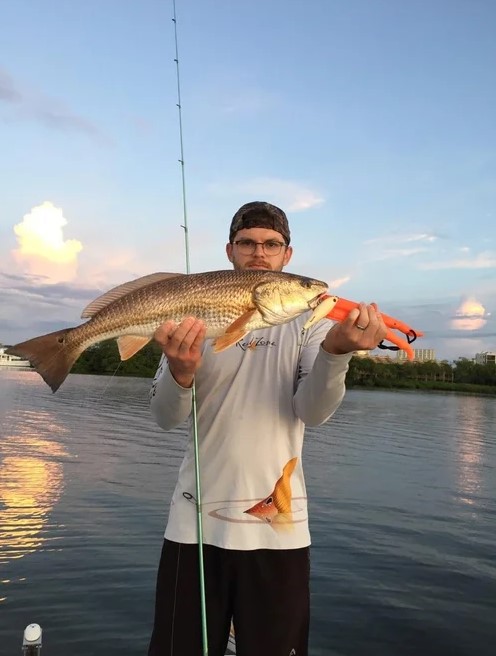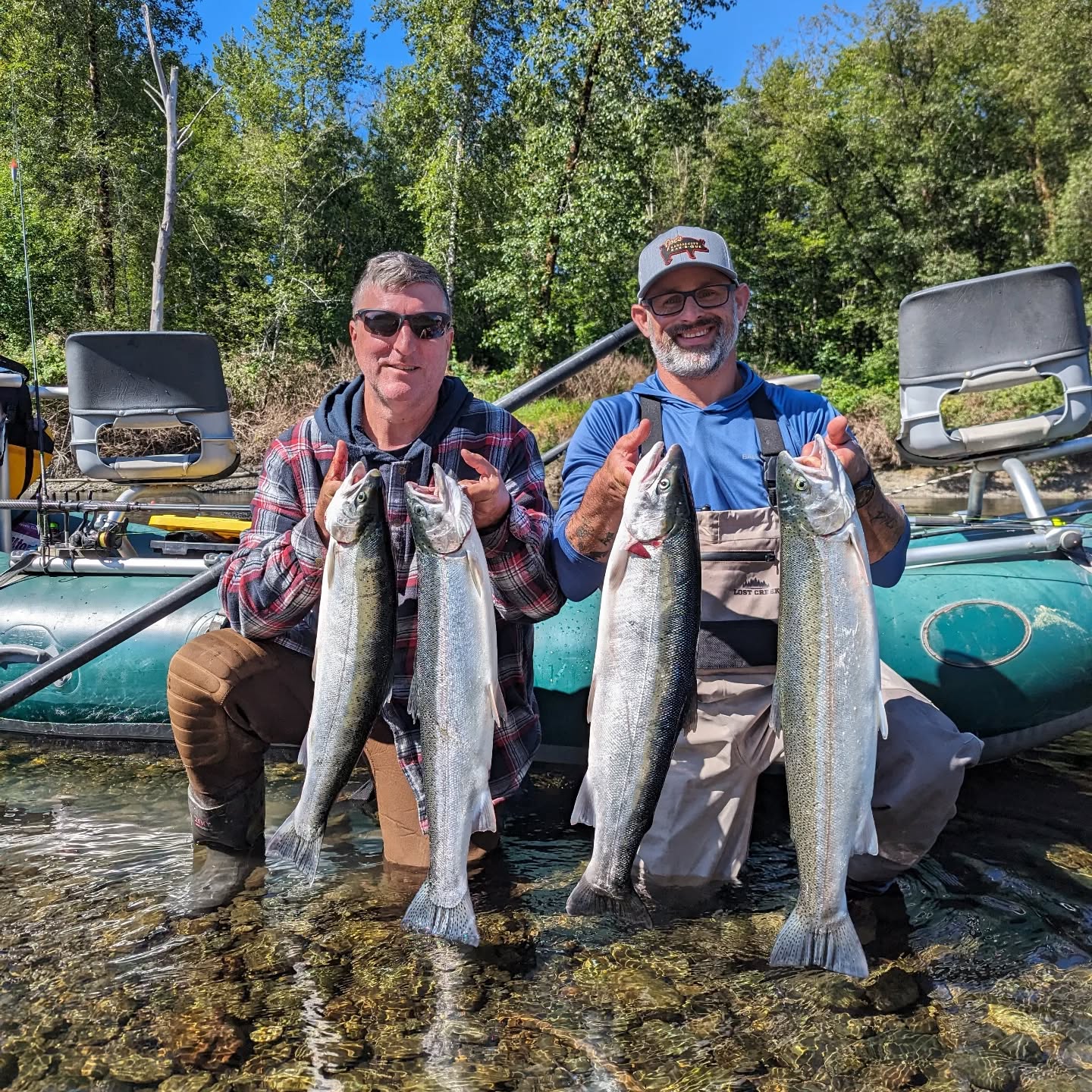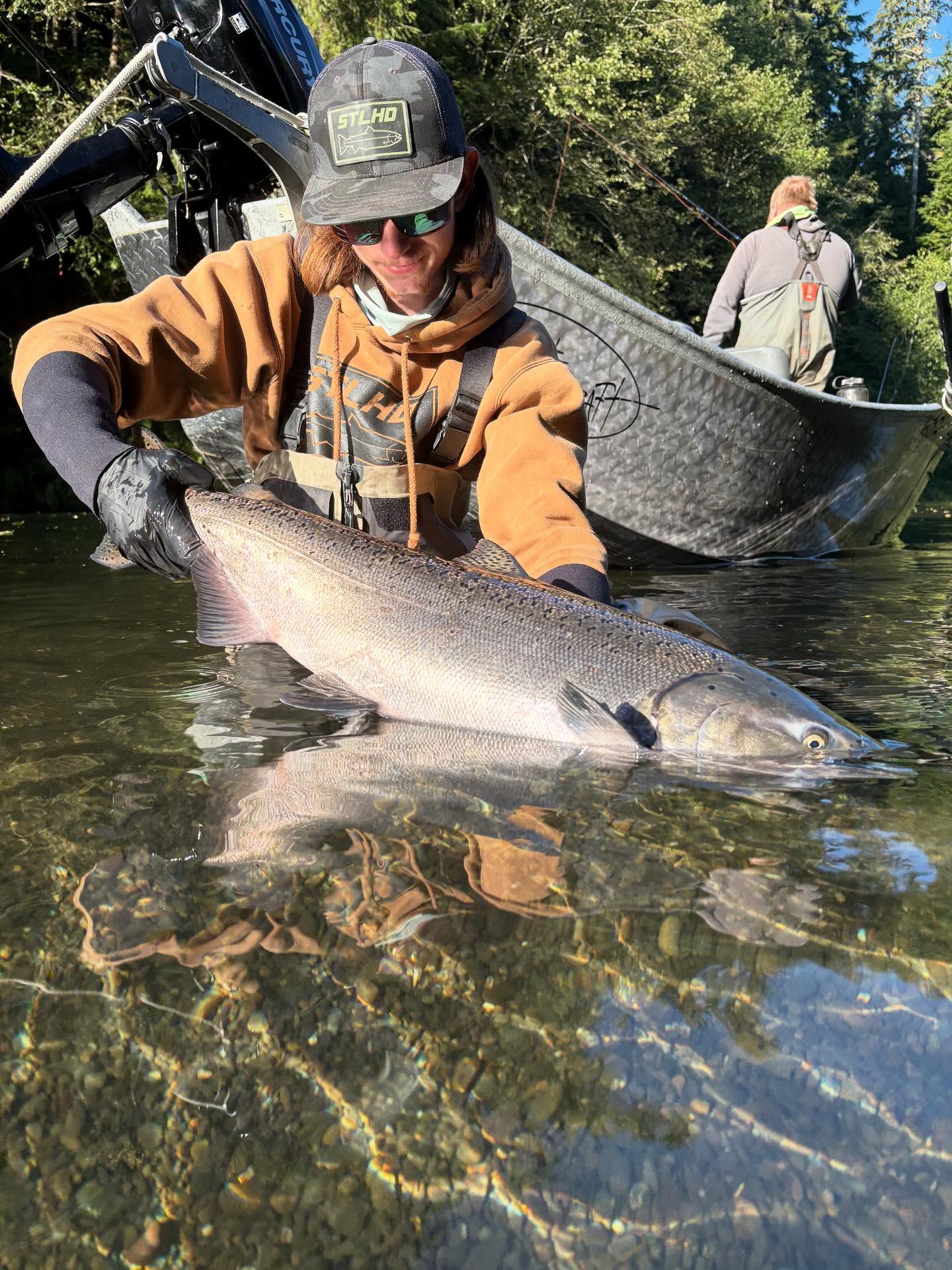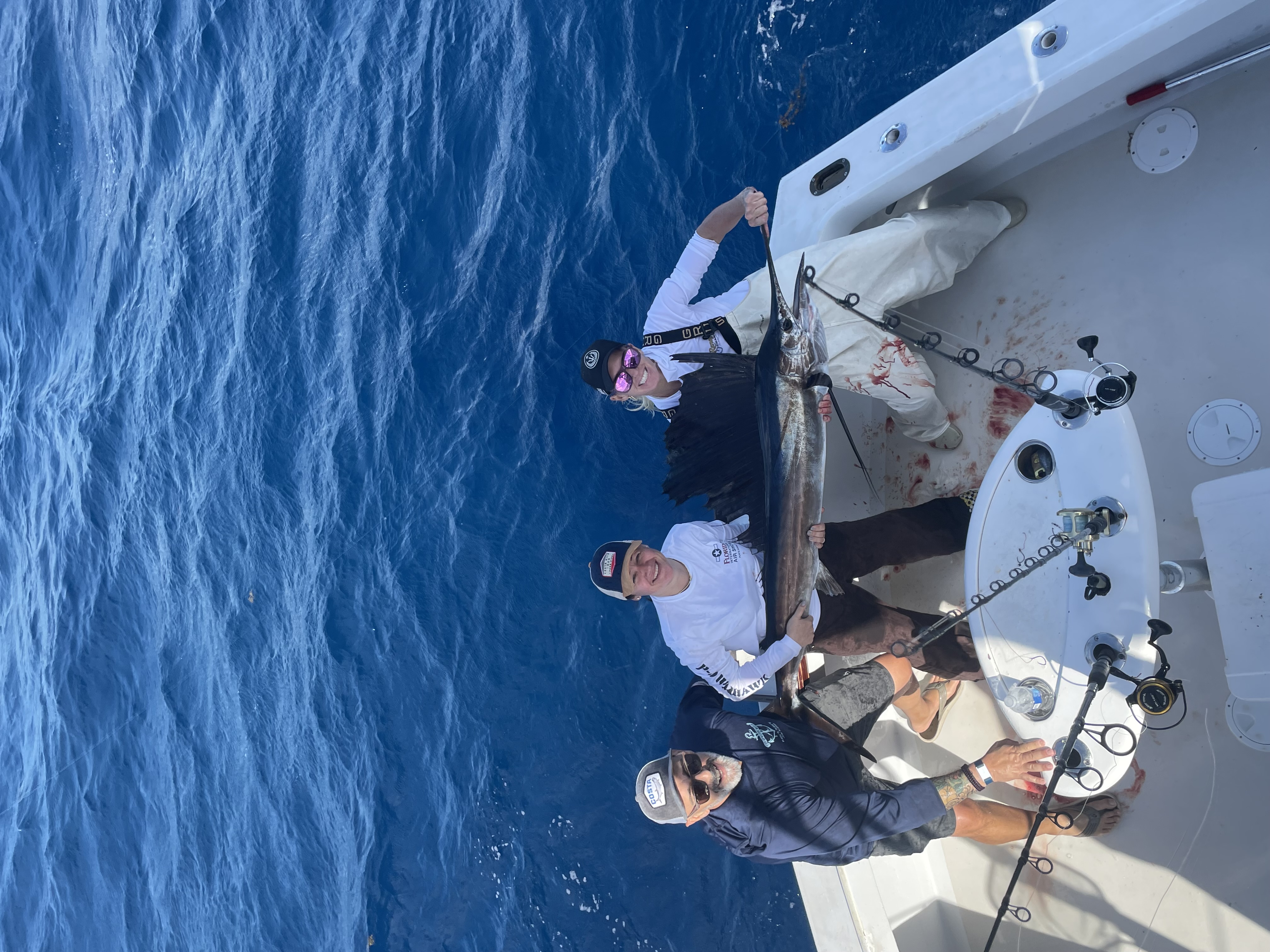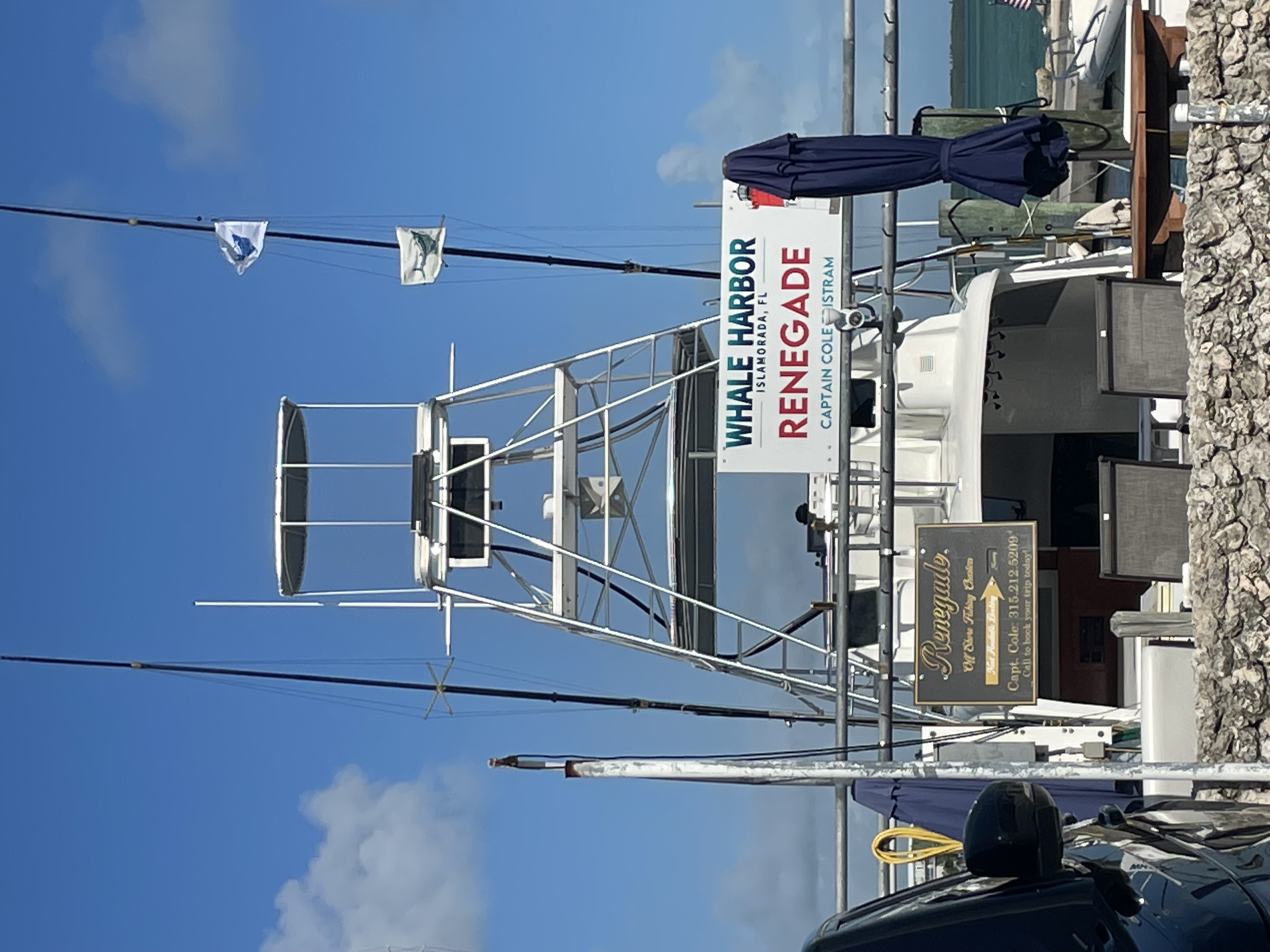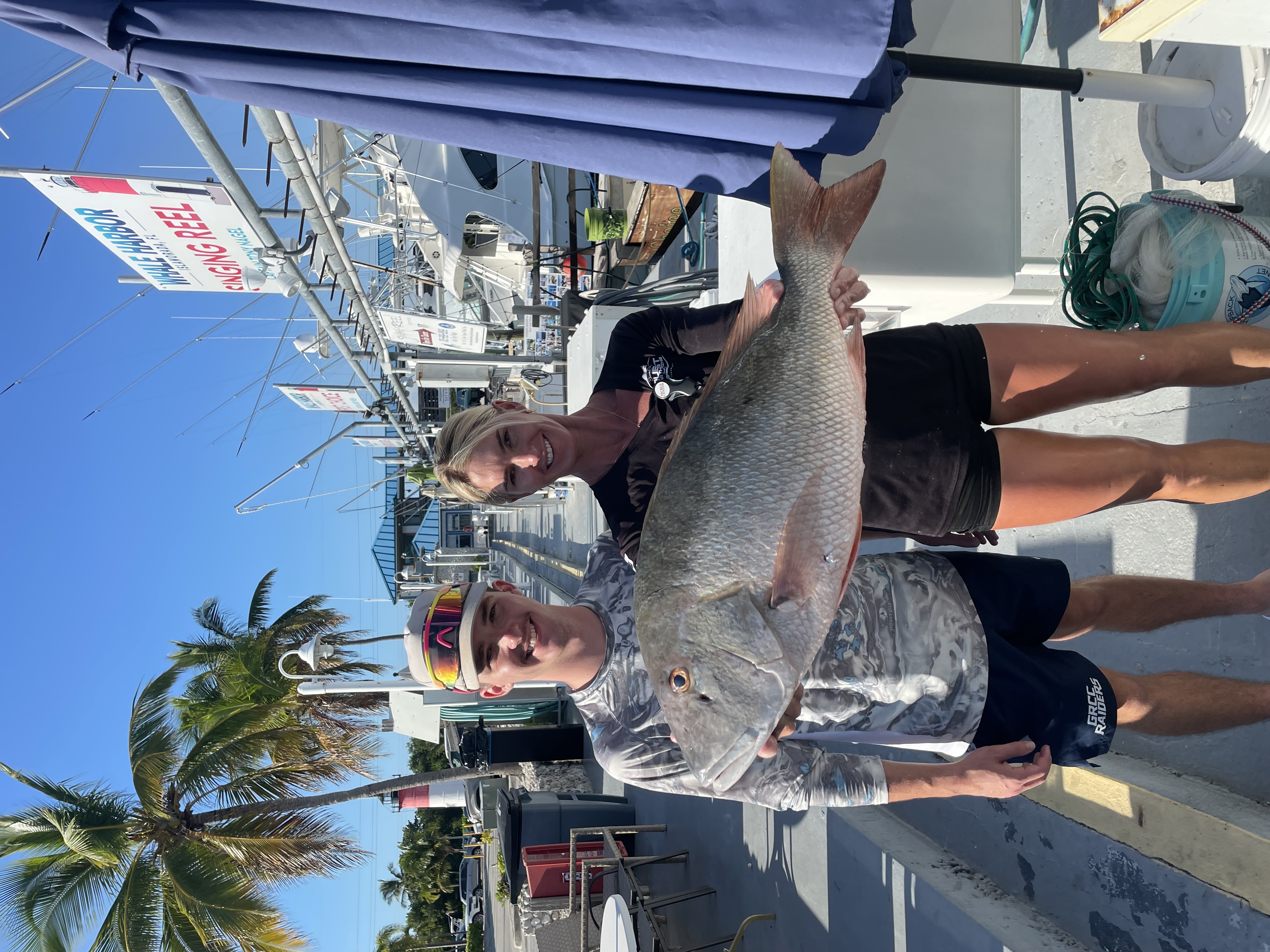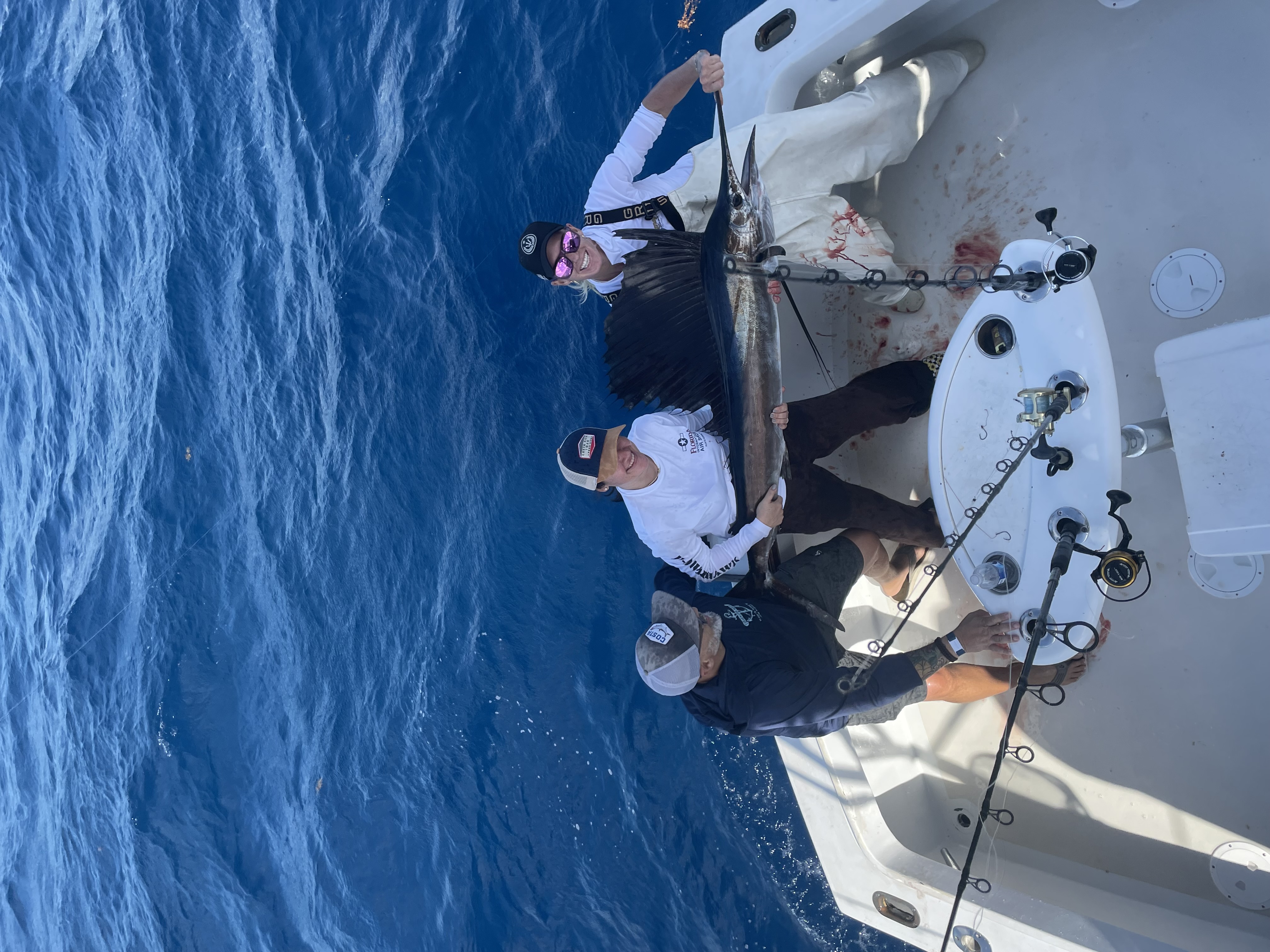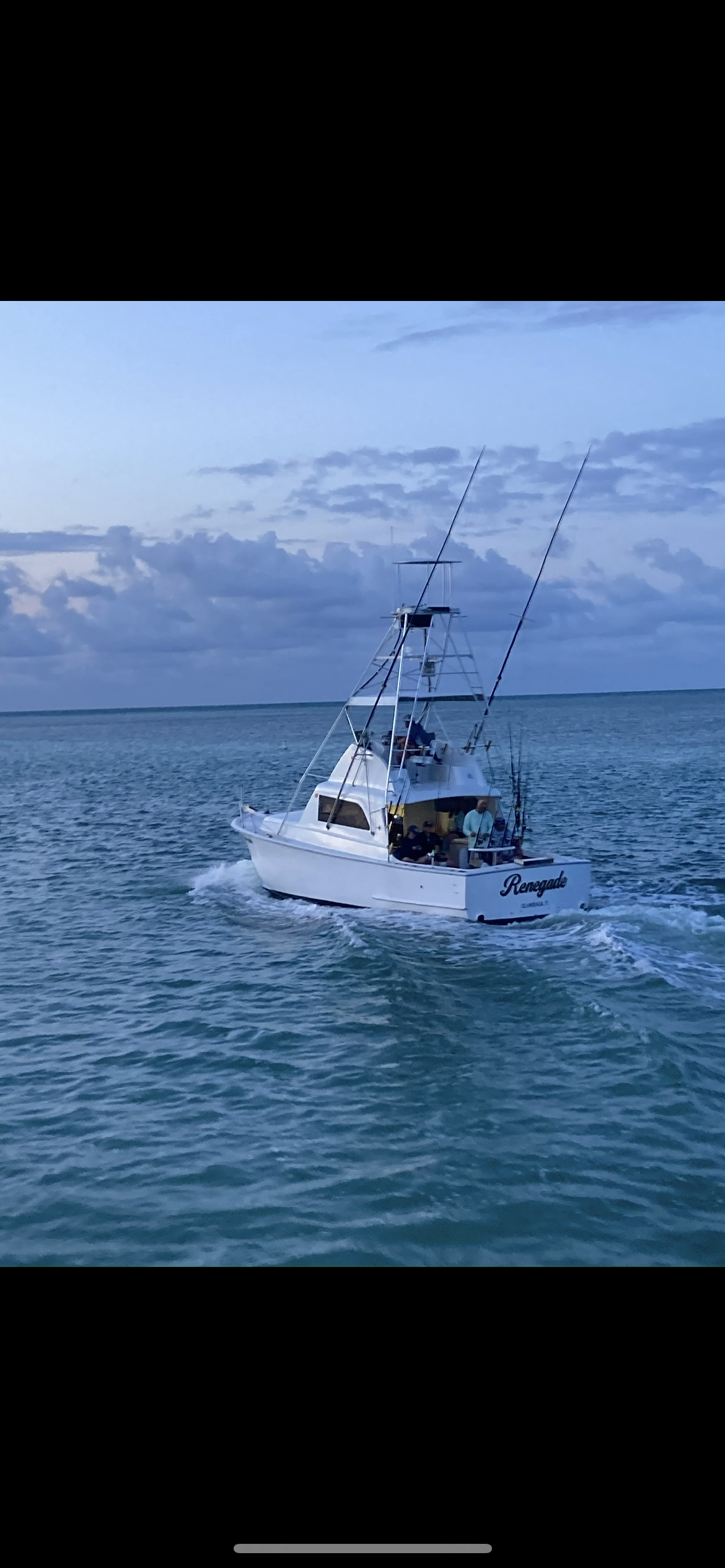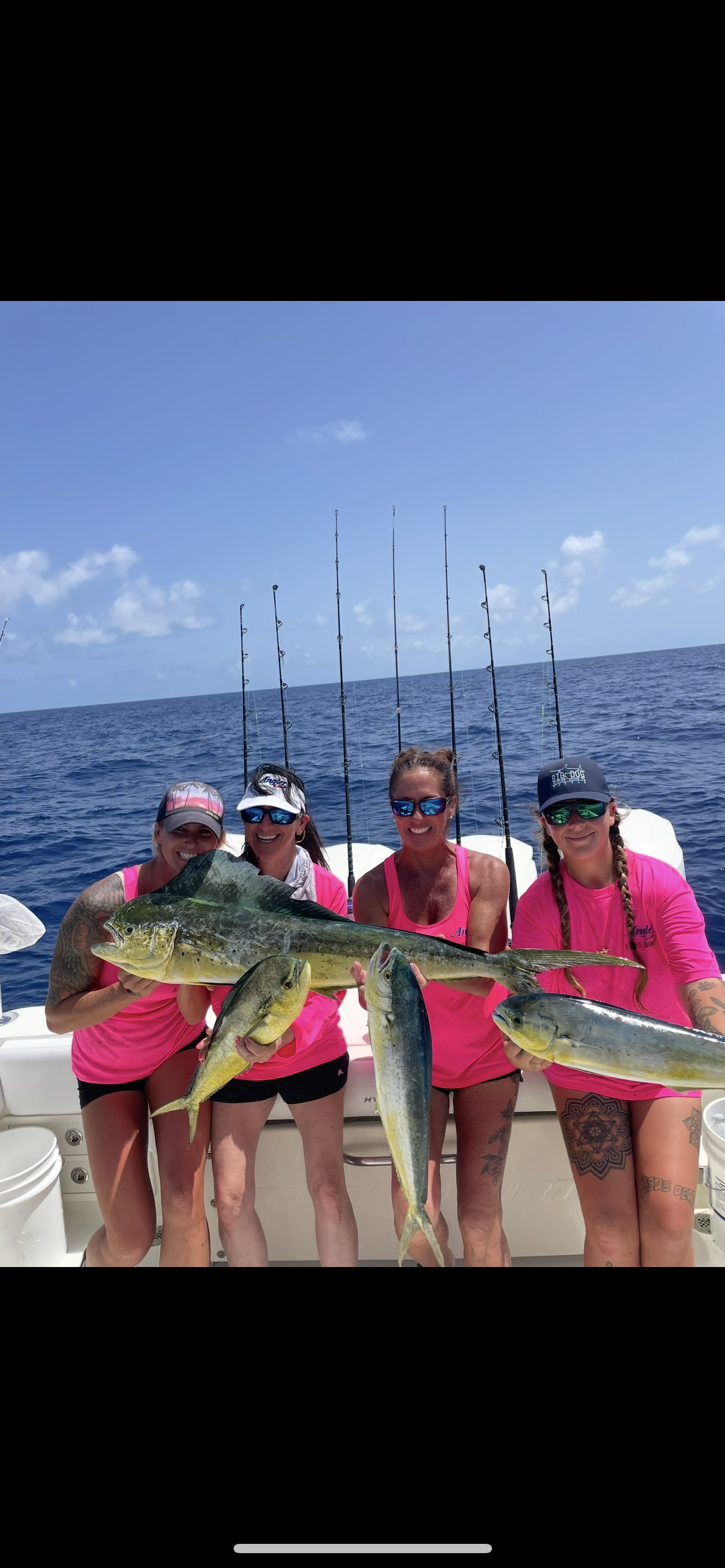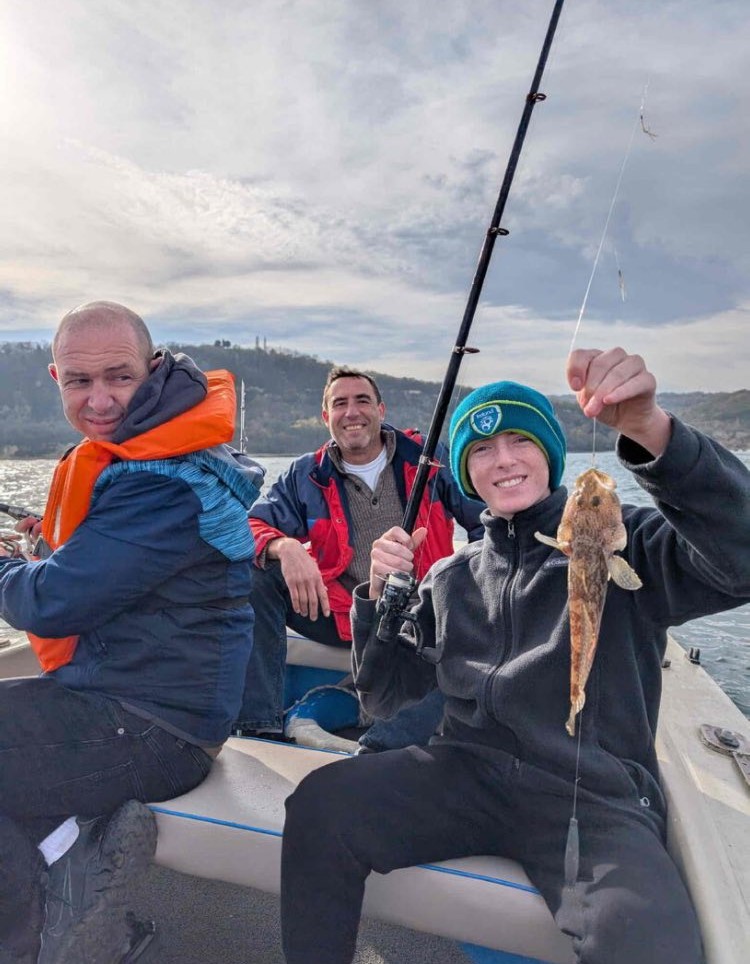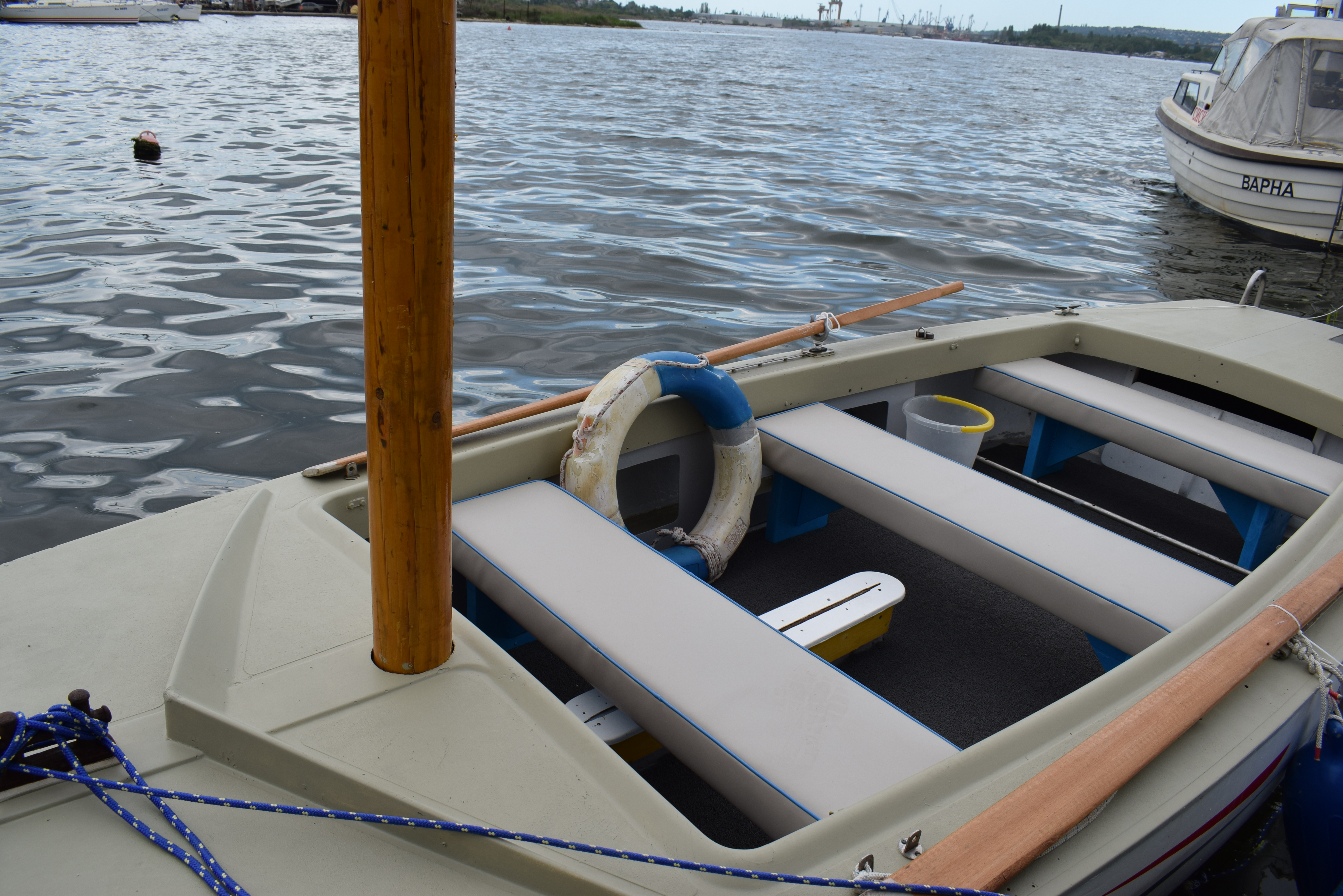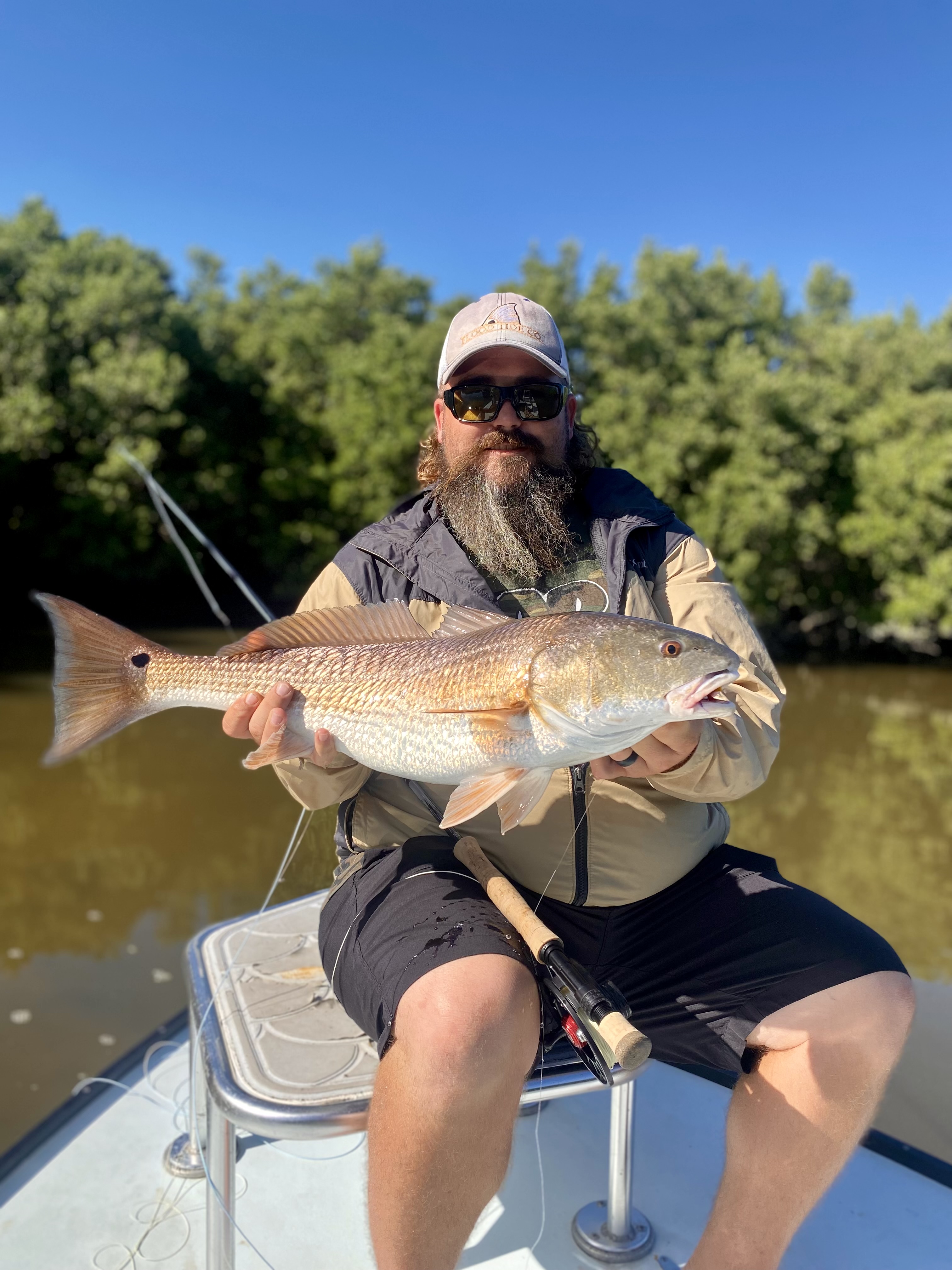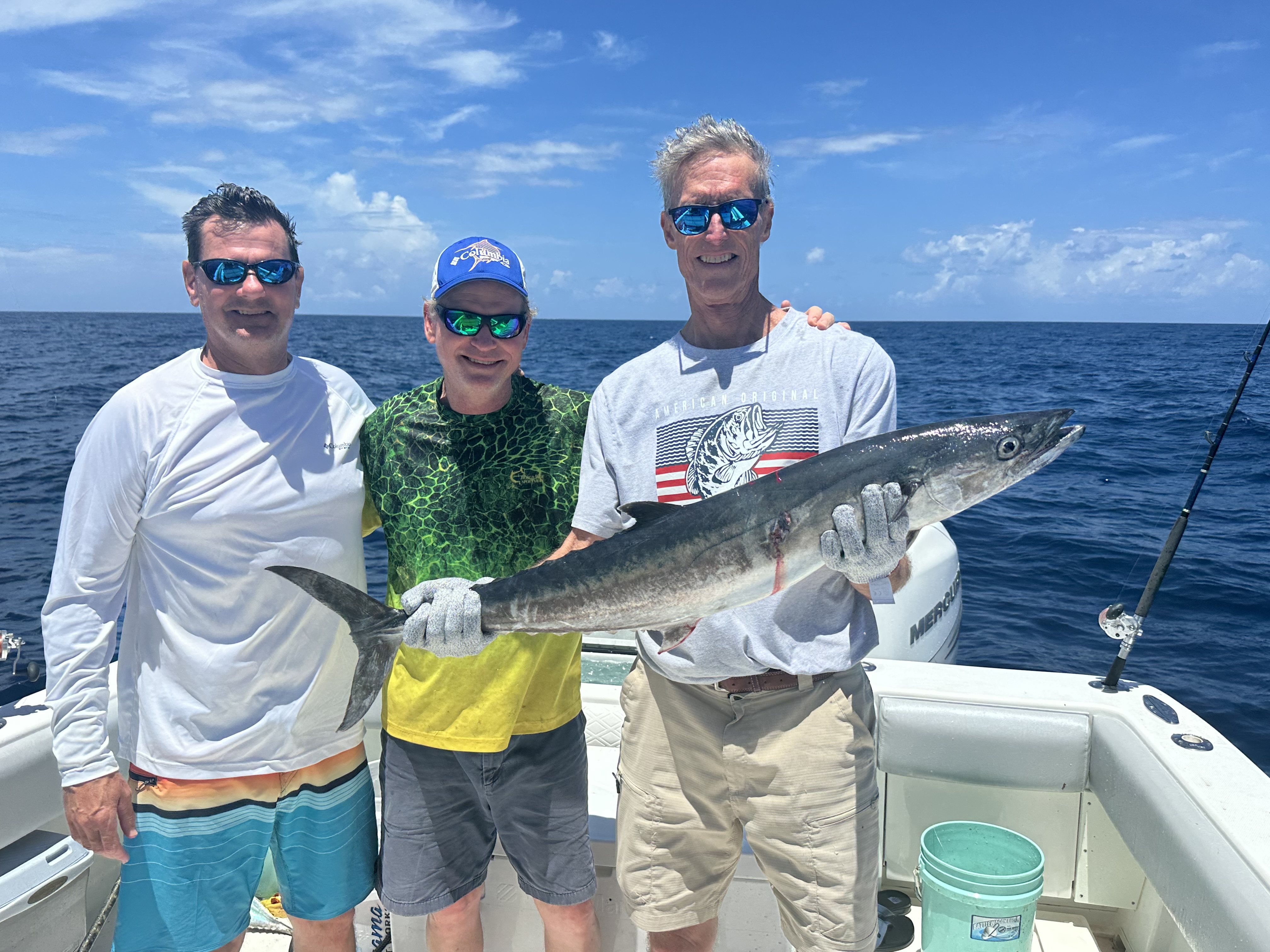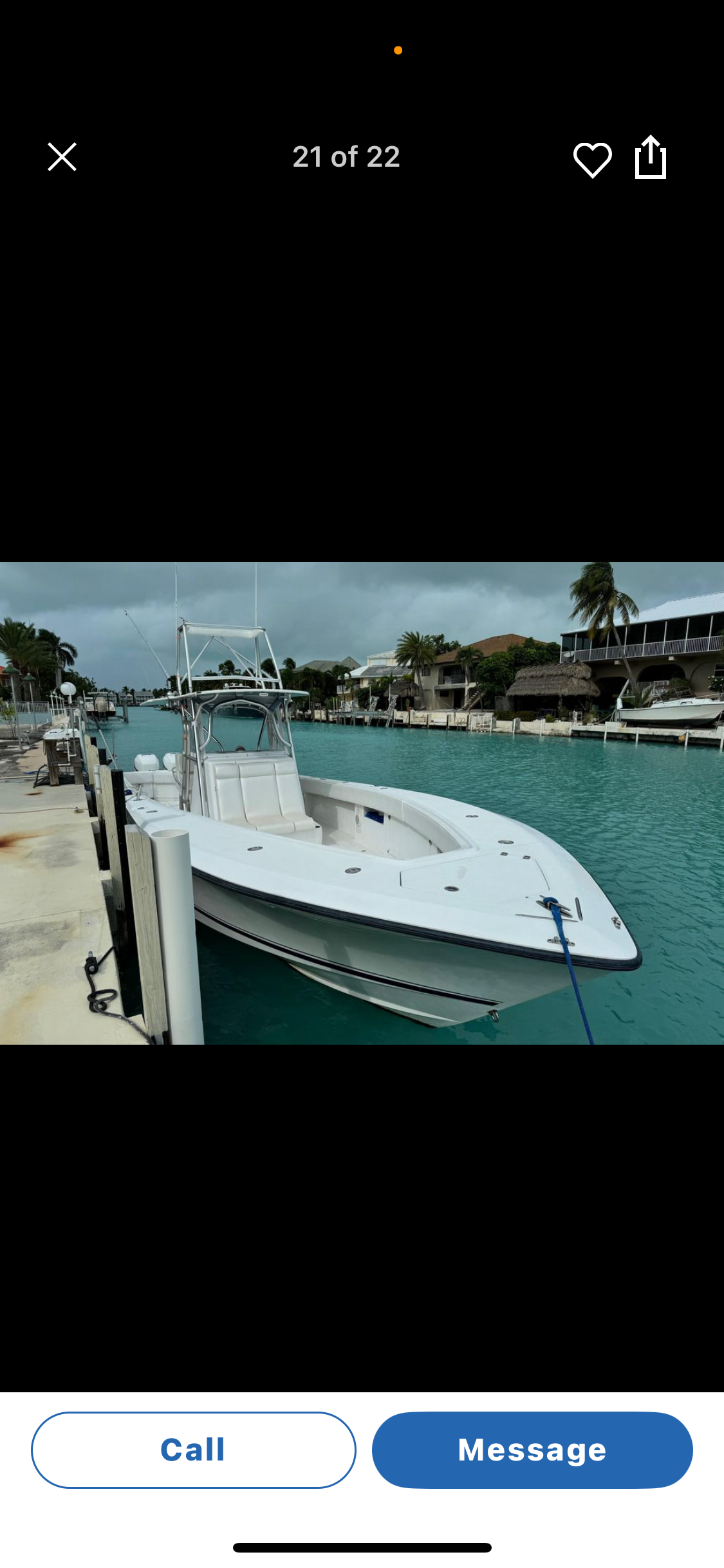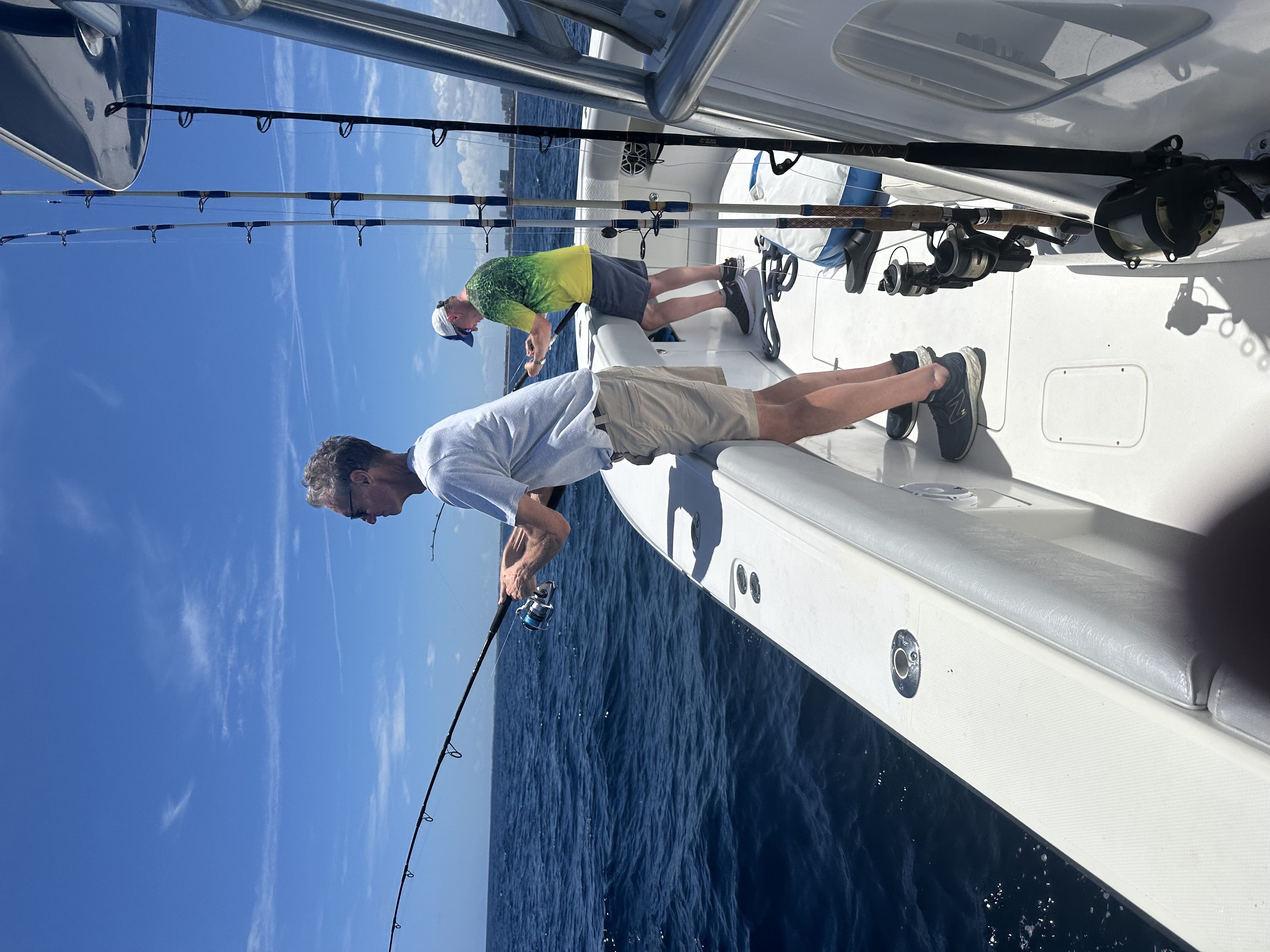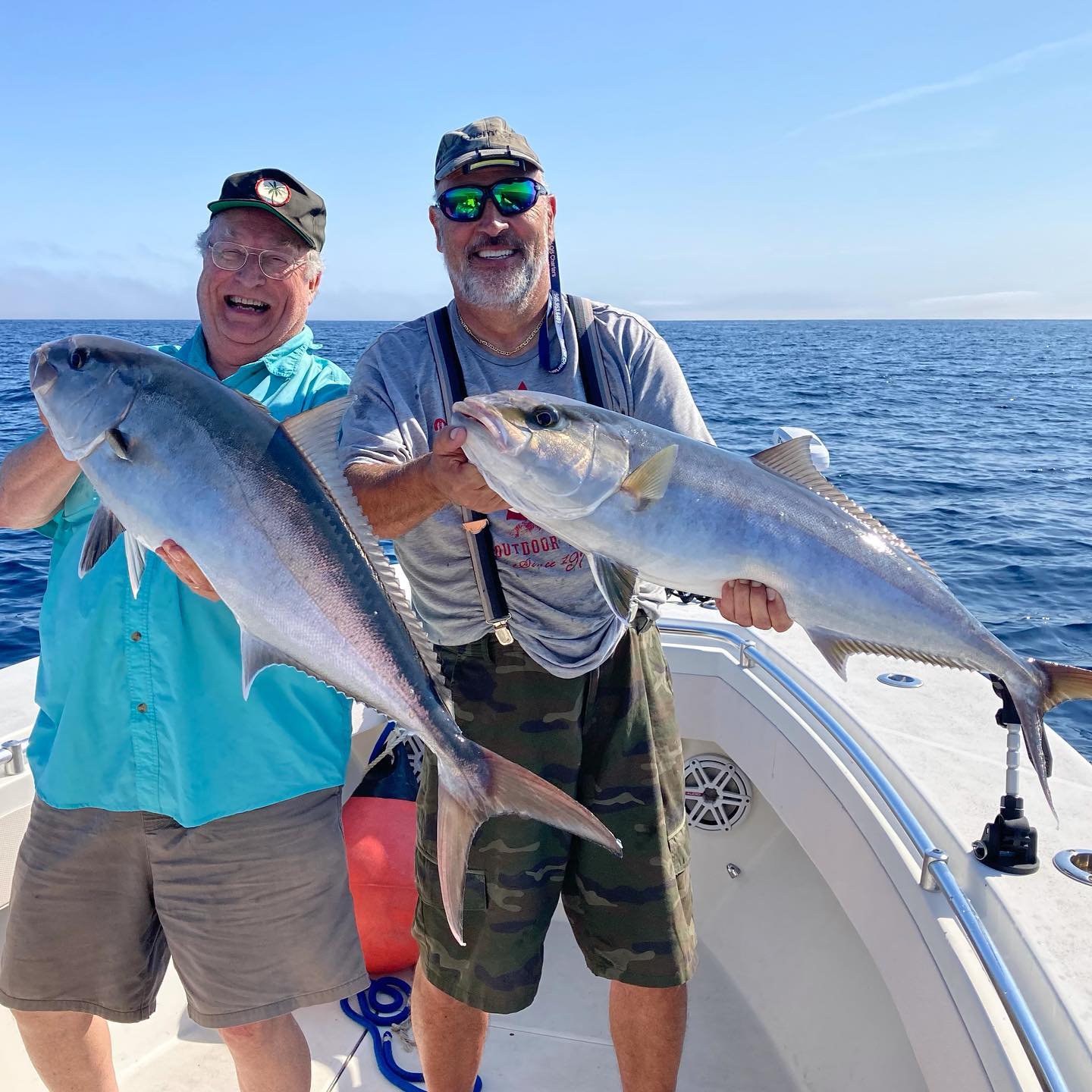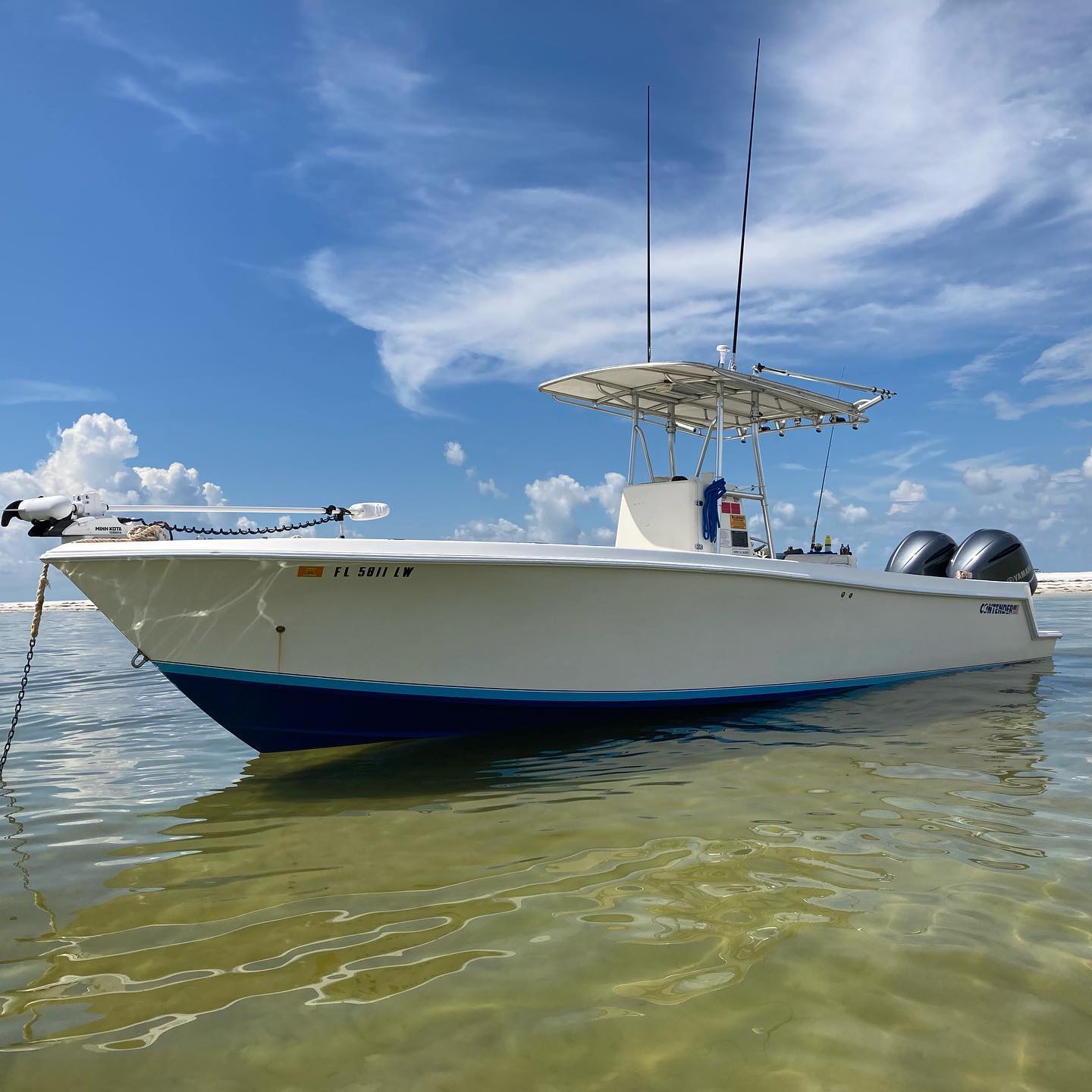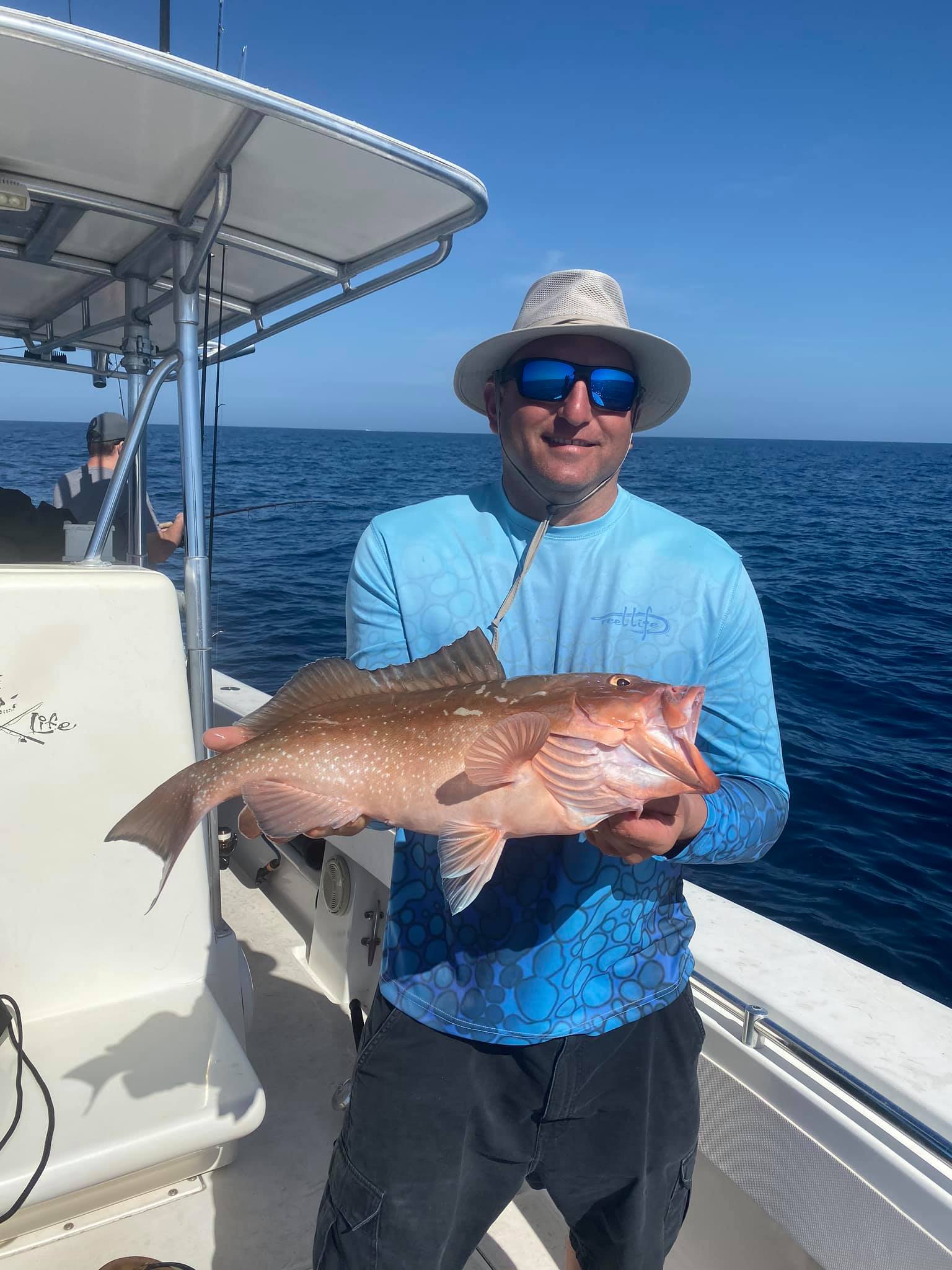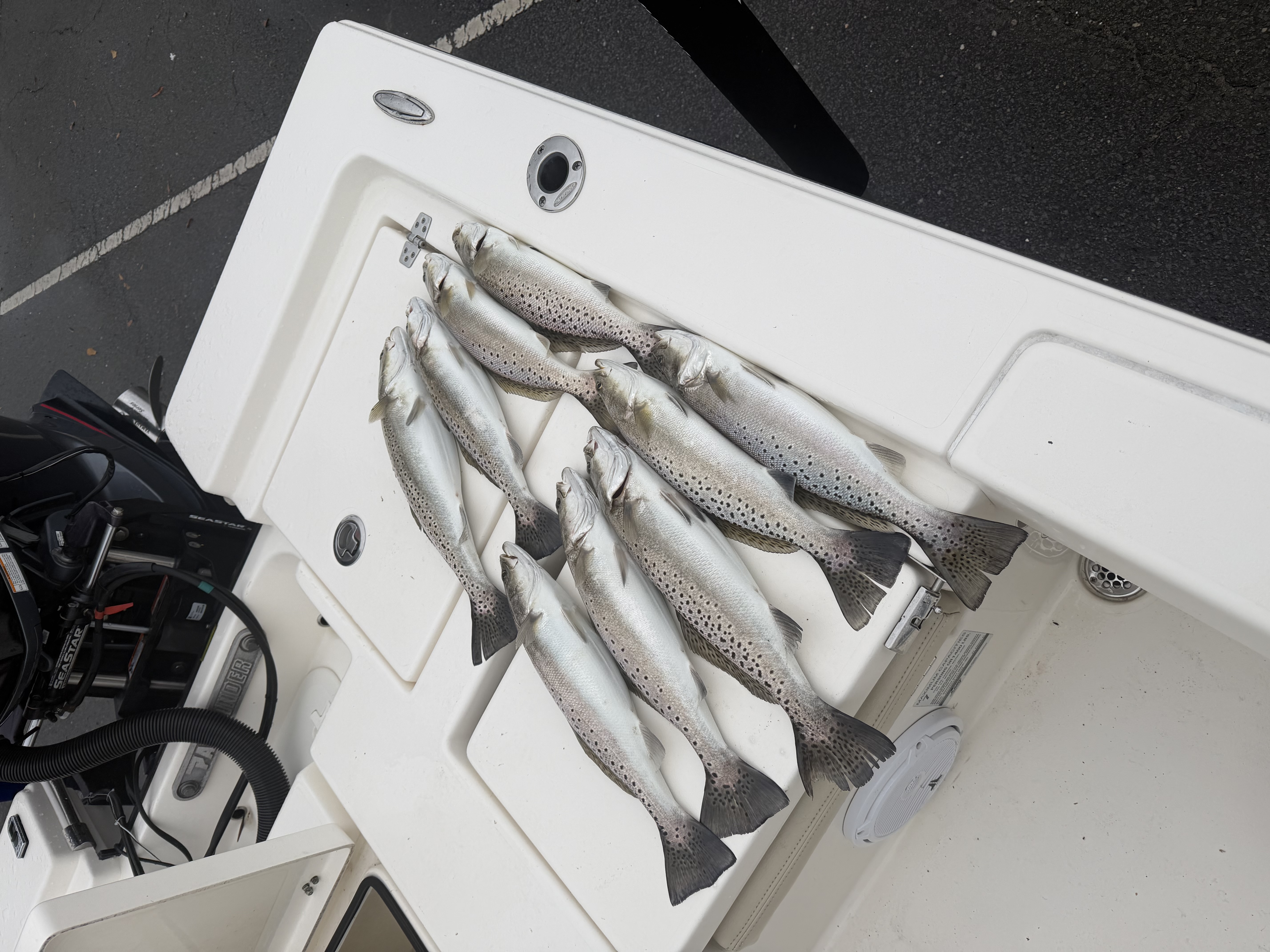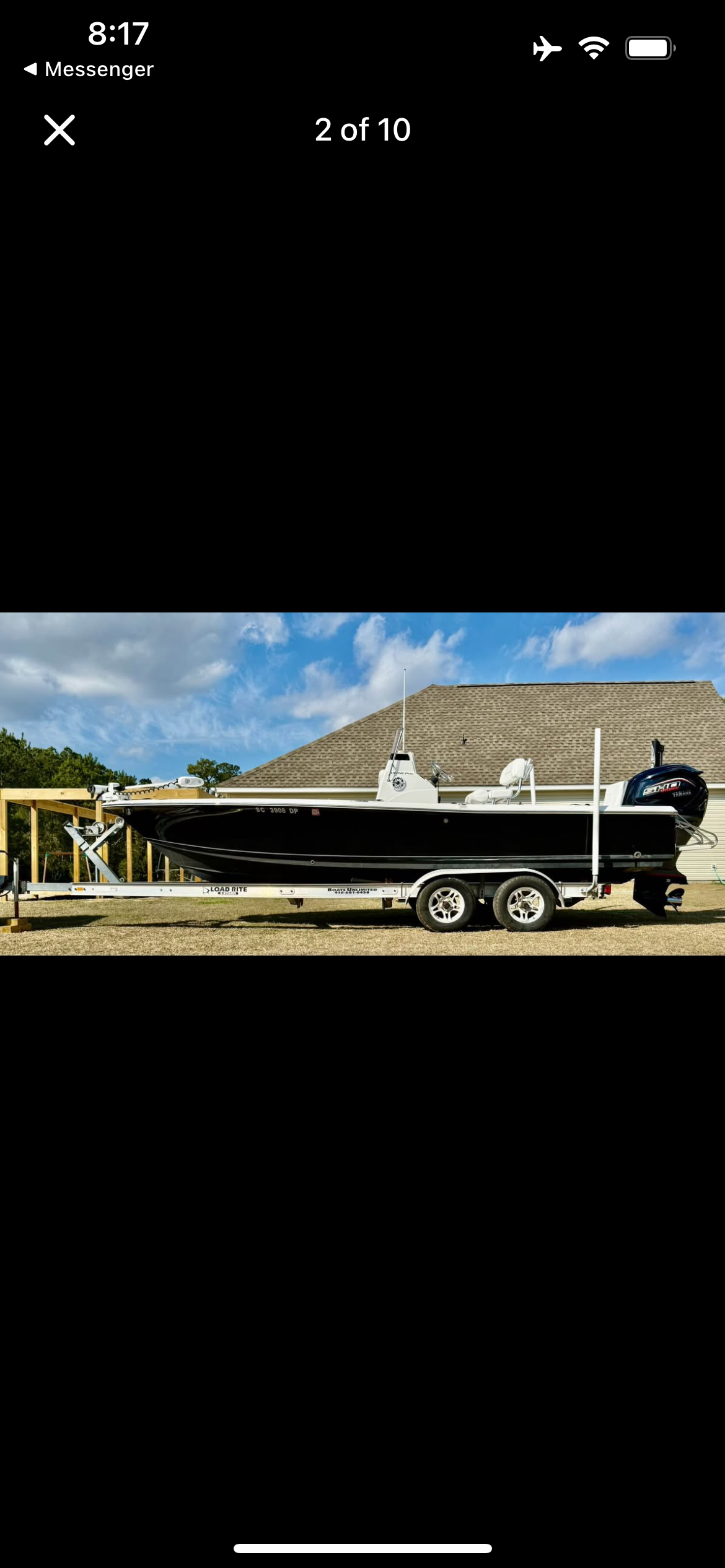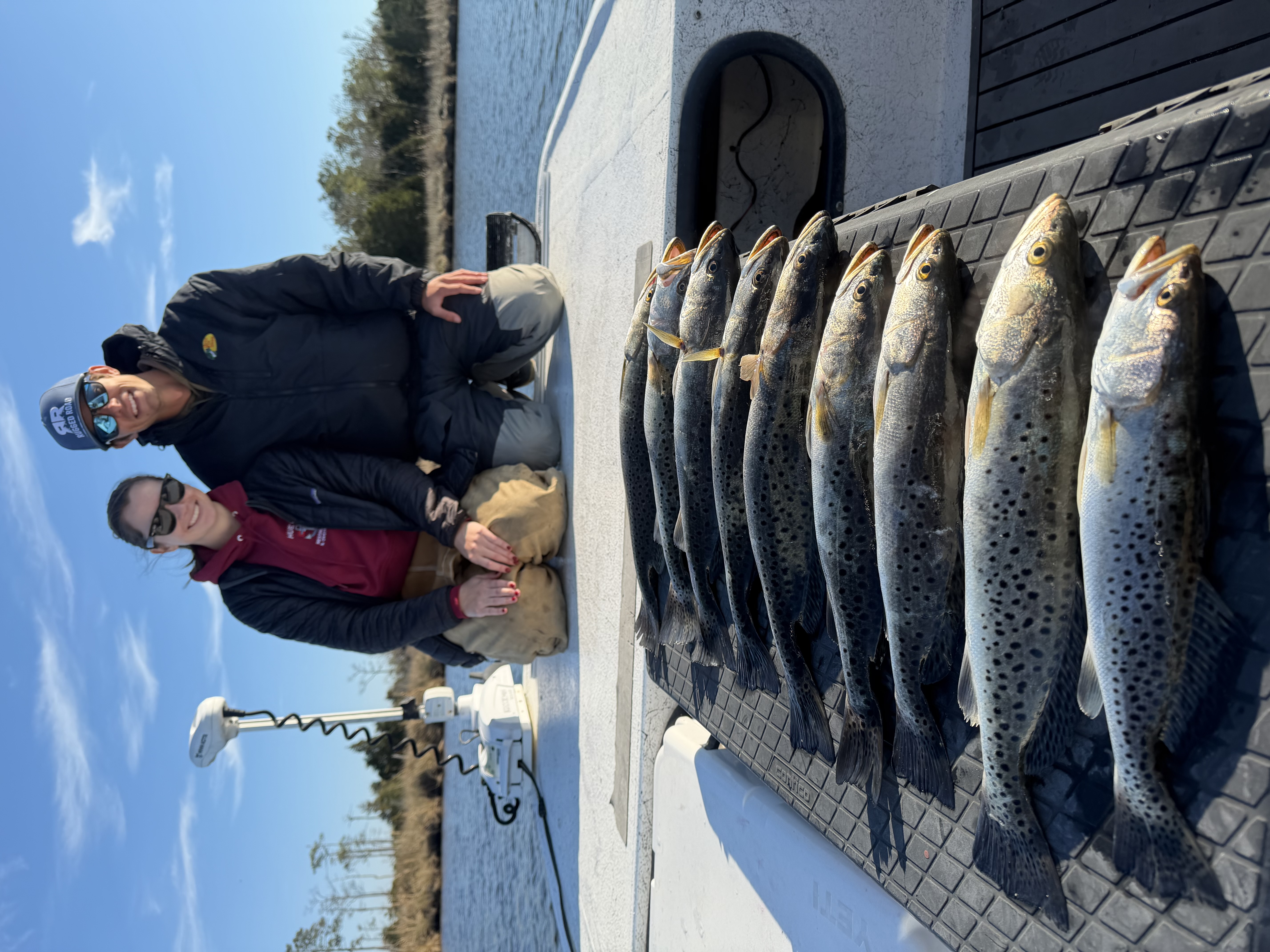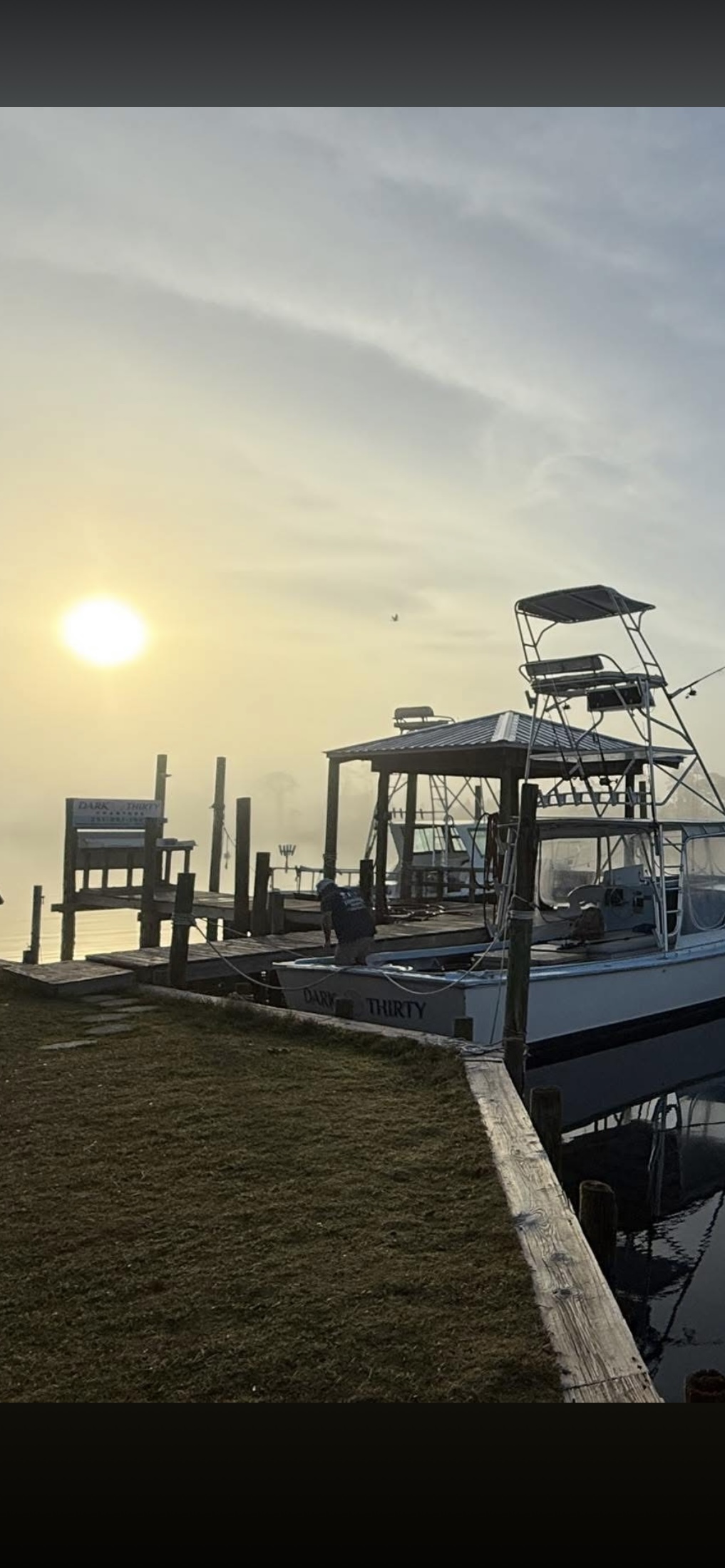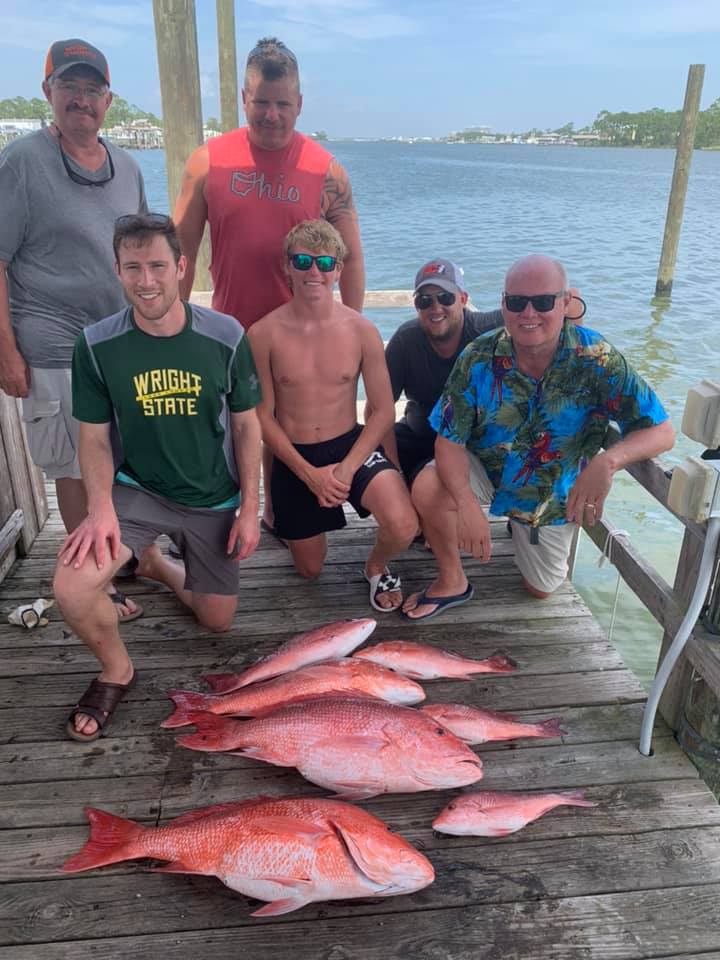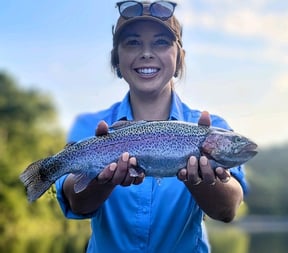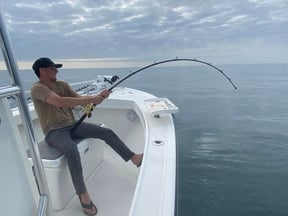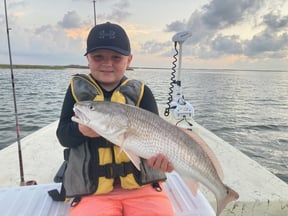Inshore Fishing Trip
Steelhead Fishing Trip
Deep Sea, Nearshore Fishing in Islamorada
4 Hour Half Day
Deep Sea, Nearshore Fishing in Islamorada
6 Hour 3/4 Day
Black Sea Trips
Inshore, Flats Fishing in Pineland
Fly Fishing Pineland
Inshore, Deep Sea, Nearshore in Palm Beach Shores
Catching Fish And Having Fun
Offshore Fishing Trip
Winter Speckled Trout
Deep Sea, Nearshore Fishing in Orange Beach
December Snapper Reopen Special!
We started Captain Experiences to make it easy to book fishing and hunting guides around the world. With over 2,000 Damn Good Guides, our platform makes finding and booking a trip seamless. Head here to check out our trips.
In Sarasota, Florida, fishing licenses and regulations are managed by the Florida Fish and Wildlife Conservation Commission (FWC).
Fishing License Requirements In Sarasota, Florida
If you are a Florida resident, you need a valid Florida fishing license to fish in the state's fresh or salt waters, unless you are exempt. If you are a non-resident, you need a valid non-resident fishing license, unless you are exempt.
Children under the age of 16 do not need a fishing license, but they are still subject to all other fishing regulations. There are also exemptions for certain groups, such as disabled persons, active-duty military personnel, and Florida residents over 65 years of age.
To obtain a fishing license, you can visit a local tax collector's office, a licensed agent such as a bait and tackle shop, or the FWC's website.
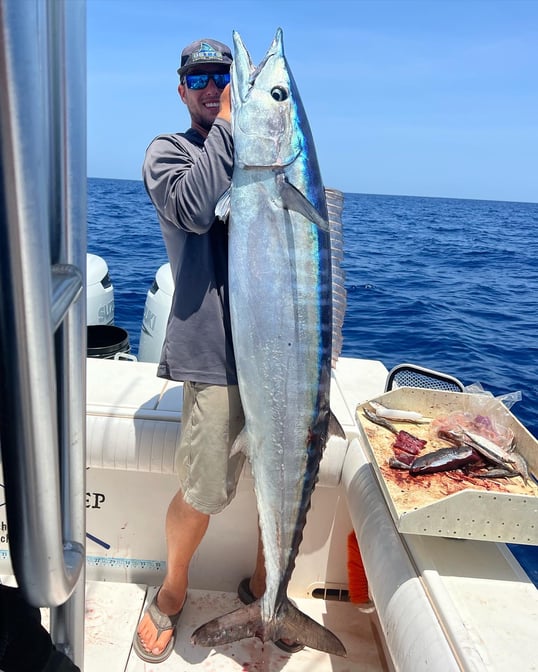
Sarasota Fishing Regulations
Fishing regulations in Sarasota vary depending on the species of fish, the body of water, and the time of year. It is important to check the FWC's website for up-to-date regulations before you fish.
Some common regulations include catch-and-release requirements for certain species, size limits, and bag limits. It is illegal to fish with certain types of gear, such as explosives, poisons, or electric currents. It is also important to properly dispose of all fishing line and tackle to prevent harm to wildlife.
It is important to note that fishing regulations are in place to protect fish populations and their habitats, so it is the responsibility of all anglers to follow them. Violations of fishing regulations can result in fines, penalties, and even the loss of fishing privileges.
Redfish Size and Bag Limits in Sarasota
The redfish season in Sarasota is open year-round, but there are certain regulations regarding the catch-and-release requirements, size limits, and bag limits that need to be followed.
Size Limits: The minimum size limit for redfish in Sarasota is 18 inches in total length, and the maximum size limit is 27 inches. Any redfish caught within this size range can be kept by the angler, but any redfish outside of this size range must be released immediately.
Bag Limits: The bag limit for redfish in Sarasota is one per person per day, and it must be within the designated size limits. For the captain and crew on for-hire vessels, there is zero daily bag limit. In federal waters, harvest is not allowed, nor is gigging, spearing, and snatching in all waters.
Snook Size and Bag Limits in Sarasota
The snook season in Sarasota can vary year to year depending on several factors, including the weather, water temperature, and state regulations. In general, the snook season is closed from December 1st through the end of February and May 1st through August 31st each year in this Gulf region of Florida. As for the catch-and-release requirements, anglers are allowed to catch and release snook year-round in Sarasota Count.
Size Limits: the slot limit for snook is between 28 to 33 inches, measured in total length. Any snook caught outside of this slot limit must be released immediately.
Bag Limits: Anglers are allowed to keep one snook per day per person within this size range. They’re required to have a snook permit.
Trout Size and Bag Limits in Sarasota
The speckled sea trout season in Sarasota, Florida is open year-round, with certain restrictions on size and bag limits.
Size Limits: Measuring the total length, trout between 15 and 19 inches may be kept. Anything above or below that range must be released immediately.
Bag Limits: The 2023 bag limit for trout in Sarasota is 3 fish per angler, per day,
When catching spotted seatrout for the purpose of harvesting, fishermen are required to use a single-hook artificial lure or a properly rigged natural bait with a non-stainless-steel circle hook.
Flounder Size and Bag Limits in Sarasota
The flounder season in Sarasota, Florida is open from January 1, 2023, to October 14, 2023. It closes from October 15 to November 30th, and re-opens again for the remainder of 2023. It's important to note that flounder may be harvested by spearing, an activity often prohibited for most species.
Size Limits: Flounder must be a minimum size of 14 inches. Anything larger than that may be kept if the season is open.
Bag Limits: The daily bag limit for flounder is 5 fish per person in Sarasota.
Tarpon Size and Bag Limits in Sarasota
Tarpon are considered a catch-and-release only fishery in the state of Florida. This means that if you catch a tarpon, it must be released immediately and unharmed. Use of gaffs, harpoons, or other piercing devices is prohibited. Tarpon fishing is closed from November 1 to April 30 each year in Boca Grande Pass. During this time, no fishing gear may be deployed or fishing activity of any kind targeted at tarpon is permitted within the boundaries of the pass.
Tarpon over 40 inches should remain in the water during release because they are large and powerful fish that can become easily stressed when removed from the water. When a tarpon is caught and brought onto a boat or out of the water, the weight of its body can cause damage to its internal organs, and the stress of being out of the water can weaken it and decrease its chances of survival.
Additionally, tarpon are sensitive fish that require high levels of dissolved oxygen to survive, and removing them from the water reduces the amount of oxygen available to them. By keeping the tarpon in the water during release, you can help to ensure that it has the best chance of survival by allowing it to recover fully from the stress of the catch and return to its natural habitat without harm.
Bag Limits: Each angler is allowed to catch only one tarpon per year, for which they must purchase a harvest tag worth $50. Only one fish can be caught per vessel. The harvest tag can only be utilized if the fish is retained with the potential to set an International Game Fish Association (IGFA) or state record.
Bonefish Size and Bag Limits in Sarasota
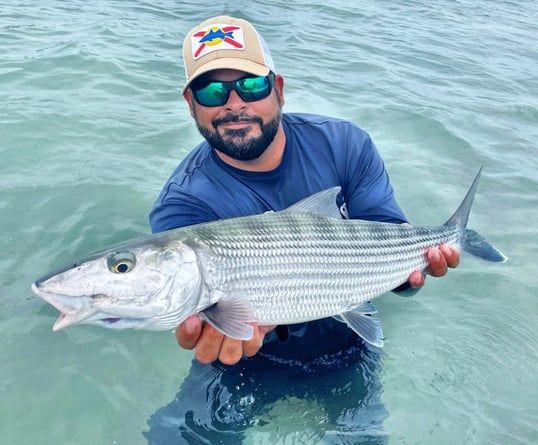
The Florida Fish and Wildlife Conservation Commission (FWC) requires that all bonefish caught in Florida state waters must be released immediately and unharmed. Anglers are required to use only single, barbless hooks when fishing for bonefish, and the use of multiple hooks or treble hooks is prohibited. Additionally, anglers must use only artificial lures when targeting bonefish in state waters, and the use of live or cut bait is prohibited.
Bag Limits: 0 per harvester due to the catch and release only fishery
The reason for catch-and-release-only regulations for bonefish is due to their value as a sport fish and the importance of their role in the local ecosystem. Bonefish are a highly sought-after game fish, prized for their speed and fighting ability, but they are also an important component of the local marine environment, serving as a critical link in the food chain. Because of their vulnerability to overfishing and habitat loss, catch-and-release regulations are necessary to protect the species and ensure its long-term survival.
Blackfin Tuna Size and Bag Limits in Sarasota
Blackfin tuna can be caught year-round in Sarasota, but they are most abundant from late winter through early summer.
Size Limits: There is no minimum size limit for blackfin tuna
Bag Limits: Each angler may keep 2 blackfin per day, or 10 total fish per boat, whichever is greater.
Mahi-Mahi Size and Bag Limits in Sarasota
Mahi Mahi season is open year round in Florida.
Size Limits: There is no minimum or maximum size limit for mahi mahi caught in Sarasota
Bag Limits: As of 2023, the daily limit is 10 mahi mahi per angler or 60 mahi mahi per vessel. Whichever is less is the legal bag limit for Gulf state waters.
Wahoo Size and Bag Limits in Sarasota
Similar to mahi mahi, wahoo season in Sarasota is open year round, and there is no minimum size requirement.
The wahoo daily bag limit in Sarasota is 2 per angler.
It's essential to check the latest regulations and restrictions with the Florida Fish and Wildlife Conservation Commission (FWC) before going out for fishing as these can change periodically.
Kingfish Size and Bag Limits in Sarasota
There are an abundance of kingfish in the Sarasota area, with a year round season.
Size Limits: Kingfish must be a minimum of 24 inches, fork length, to be kept.
Bag Limits: In the Gulf, the daily recreational limit is 3 fish per angler.
Amberjack Size and Bag Limits in Sarasota
The 2023 recreational amberjack season is closed through May in the Gulf of Mexico due to an emergency ruling, and it is set to re-open on August 1.
Size Limits: Amberjack must measure 34 inches in fork length in the Gulf of Mexico.
Bag Limits: Only one amberjack may be kept during open season.
To stay up to date on amberjack season, check out the Gulf of Mexico Fishery Management Council website for the latest updates.
Hannah Shebat
Updated on August 1, 2023
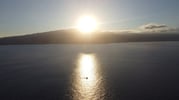
April 26, 2022

August 21, 2023

July 31, 2024

June 28, 2023
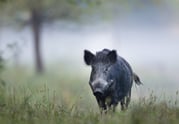
November 7, 2023
Related Articles
July 13, 2022
May 11, 2023
July 15, 2022
Featured Locations
- Fishing Charters Near Me
- Austin Fishing Guides
- Biloxi Fishing Charters
- Bradenton Fishing Charters
- Cabo San Lucas Fishing Charters
- Cancun Fishing Charters
- Cape Coral Fishing Charters
- Charleston Fishing Charters
- Clearwater Fishing Charters
- Corpus Christi Fishing Charters
- Crystal River Fishing Charters
- Dauphin Island Fishing Charters
- Daytona Beach Fishing Charters
- Destin Fishing Charters
- Fort Lauderdale Fishing Charters
- Fort Myers Fishing Charters
- Fort Walton Beach Fishing Charters
- Galveston Fishing Charters
- Gulf Shores Fishing Charters
- Hatteras Fishing Charters
- Hilton Head Fishing Charters
- Islamorada Fishing Charters
- Jacksonville Fishing Charters
- Jupiter Fishing Charters
- Key Largo Fishing Charters
- Key West Fishing Charters
- Kona Fishing Charters
- Lakeside Marblehead Fishing Charters
- Marathon Fishing Charters
- Marco Island Fishing Charters
- Miami Fishing Charters
- Montauk Fishing Charters
- Morehead City Fishing Charters
- Naples Fishing Charters
- New Orleans Fishing Charters
- New Smyrna Beach Fishing Charters
- Ocean City Fishing Charters
- Orange Beach Fishing Charters
- Panama City Beach Fishing Charters
- Pensacola Fishing Charters
- Pompano Beach Fishing Charters
- Port Aransas Fishing Charters
- Port Orange Fishing Charters
- Rockport Fishing Charters
- San Diego Fishing Charters
- San Juan Fishing Charters
- Sarasota Fishing Charters
- South Padre Island Fishing Charters
- St. Augustine Fishing Charters
- St. Petersburg Fishing Charters
- Tampa Fishing Charters
- Tarpon Springs Fishing Charters
- Venice Fishing Charters
- Virginia Beach Fishing Charters
- West Palm Beach Fishing Charters
- Wilmington Fishing Charters
- Wrightsville Beach Fishing Charters
